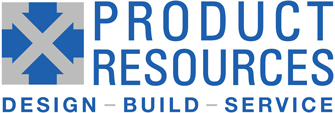Sustaining Engineering refers to the ongoing production of a product over time, and the steps needed to ensure that all parts that make up that product are continuing to be available and delivered without interruption.
This requires continued monitoring of the supply chain to be sure that every part and every supplier are able to meet your needs for the foreseeable future.
Manufacturing requires a consistent supply of raw material and components and a consistent application of manufacturing processes.
Product Resources spends considerable time doing the sustaining engineering work to keep the materials flowing on time, and to keep the manufacturing processes up to date based on CAPA program and customer input.
Once the material is identified and sourced, it is reasonable to expect the supply chain to deliver a continuous stream of that material, all meeting the specifications, for a reasonable period. This “reasonable period” is somewhat subjective and will vary based on the type of material. For generic, standard parts (e.g., hardware) it is effectively forever. Custom parts (e.g., machined parts, molded parts) are also available for an extended time since you have the control over the specifications, and the parts are being made to those specifications.
Commercial parts, purchased to a manufacturer’s datasheet, can be more problematic. If you read the datasheets closely, you will likely find a statement with words to the effect of “specifications may change without notice”. It has been our experience that if the specifications are going to change, you are notified, but unless you have a separate contract, you can’t count on it. Integrated Circuits are a little different; it is rare that a specification will change. It is more likely the part would be discontinued due to lack of demand, but even that is unlikely. Almost all semiconductor manufacturers publish an expected lifetime for the part, and you have years to prepare. Those notes on a datasheet “not recommended for new designs” are telling you that the end is getting close and it’s best to pay attention to them.
The toughest parts to predict are the computer and communication related assemblies – Computer motherboards, displays, disk drives/SSD, USB X.0 chips, computer chipsets, and the like. These are made in huge quantities for a market where there is always something faster and cheaper being introduced. For those components, like disk drives, the life cycle of a particular part number is measured in months, not years. Typically, these devices are designed to an electrical and mechanical interface standard, and that allows us to find a substitute in short order, and with a reasonably low risk.
That is not always the case however, and when there is no alternate to a part that can no longer be purchased through normal channels, you have a problem. There are a few ways to handle part obsolescence like this:
- If you have enough time and the supplier is offering a last-time buy, be sure to procure enough of the part to maintain production until you can find an alternate or make engineering changes to the product to design in a new part.
- If you are caught short, there is a possibility that a broker will have a reasonable supply of the part. This is more likely with semiconductors than computer board assemblies, but it is worth it to check. If you decide to buy from a broker (especially semiconductors), beware of counterfeit parts.
- Find a direct replacement and qualify the part. This is easier with time available before you run out. The amount of testing and qualification necessary will depend on the risk of making the change.
- Make design changes to allow for a new part. This is likely the most difficult and time-consuming option.
All this effort comes under the heading of Sustaining Engineering.
Part of Product Resources’ efforts to maintain your product are paying attention to the supply chain and checking with suppliers on the risk of parts at their end-of-life. When we find that the risk is too high, we will make a recommendation and work with our customer to implement the changes in a controlled manner, as the lowest possible cost. The more time you have to react to these inevitable changes, the easier and less expensive it will be to maintain the product flow.
Sustaining engineering also encompasses the modifications to the product design and manufacturing process necessitated by input from customers and end users. Our QMS utilizes a CAPA system (Corrective Action and Preventative Action) and continuous improvement to maintain product quality and lower costs for manufacturing.
